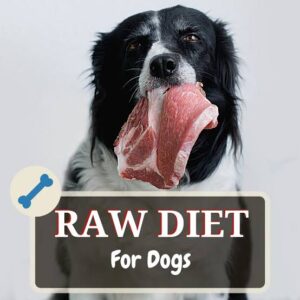
 What does a raw diet entail?
What does a raw diet entail? What types of meats are included in raw dog food diets?
The following are some of the meats that dogs can eat on this diet:
-
- Chicken
-
- Turkey
-
- Venison
-
- Beef
-
- Bison
-
- Fish
-
- Pork
-
- Rabbit
Muscle and bone (like bone-in chicken breast), organ meat (such gizzards, hearts, and liver), and fat are commonly used by raw dieters’ parents.
Some dog owners smash the bones up, particularly if their dog is little or has terrible teeth. It is critical that you feed your dog only raw bones and not cooked bones. Bones become brittle during the cooking process, which can lead to internal punctures and intestinal blockages, both of which can be fatal if not handled.
What are the views of the American Veterinary Medical Association and the Food and Drug Administration on raw diets?
Unprocessed raw foods for dogs are not recommended by the American Veterinary Medical Association because they can contain bacteria that can make pets sick. Preparing raw meat diets for dogs, according to the FDA, can endanger humans and cause illness due to cross-contamination.
Others believe that preparing raw meat for dogs is no different than preparing it for humans, and that there are no hazards if proper meat-handling practises are followed, such as frequent handwashing and using clean utensils.
It’s worth noting that bacteria can be found in any meat, regardless of its quality. Cooking, on the other hand, eliminates this bacteria, rendering it harmless to people and animals. Because raw diets aren’t prepared, veterinarians are concerned that bacteria in the meat could make dogs sick.
Dogs’ raw diets come in a variety of flavours.
The three primary types of raw diets for dogs are as follows:
-
- BARF diet (Biologically Appropriate Raw Food)
The normal raw food diet is also known as the biologically suitable raw food diet. BARF entails feeding dogs a variety of raw meats as well as dog-friendly fruits and vegetables. While the acronym may not sound enticing, many dogs benefit from this diet, which includes a brighter coat and healthier skin.
2. Diet based on prey
This diet plan focuses on feeding dogs meals that are comparable to those eaten by wolves. The key difference between this diet and the BARF diet is that the prey model contains no fruits, vegetables, grains, or dairy. Small creatures (such as rabbits, quail, and ducks) that your dog’s ancestors may have eaten are recommended in this approach. Some pet parents who choose the prey model diet feed their animals in their natural state, including feathers, fur, and all.
The prey model specifies the amount and type of meat that dogs should consume in percentages. The following is a complete breakdown of the nutrient percentages in the prey model diet.
A dog’s diet should comprise the following items, according to the prey model diet:
-
- Meat that is 80 percent muscle
-
- 10% of the bones
-
- 5% of the liver
-
- Miscellaneous organs account for 5% of the total.
3. Raw ketogenic diet
The ketogenic raw diet is more limited than the other two. By denying dogs carbs, this diet aims to put them into a state of ketosis. This diet works by tricking the body into using fat instead of carbohydrates for energy. Although the ketogenic diet includes the same meats as a conventional raw diet, it excludes sweet potatoes, beans, and grains. Instead, low-carb fruits and vegetables such as green beans, broccoli, cauliflower, and blueberries are prioritised.
The advantages and disadvantages of feeding a raw diet to dogs
So, what are the advantages of providing a raw diet to your dog? Pets on raw foods had a brighter coat, stronger teeth, and more “get up and go” than those on kibble, according to their owners. Raw diets have the extra advantage of appealing to finicky eaters. Although there is anecdotal evidence that raw diets can aid in the treatment of major illnesses, there is no concrete study to back this up.
When considering moving to a raw diet, there are several dangers to consider. E. coli and salmonella can be detected in raw meat, but these pathogens have also been found in commercial kibble. This diet is not recommended for dogs with compromised immune systems, such as those receiving chemotherapy or those suffering from organ failure, due to the risk of contamination.
Some physicians are concerned that dogs on raw diets may be deficient in calcium, phosphorus, and vitamin A; as a result, many pet parents who feed raw supplement their dog’s diet. Healthy dogs rarely have a problem with a little excess vitamin A, but puppies with liver or renal disorders may not be able to handle large doses of this vitamin.
Finally, unbroken bones might harm a dog’s teeth or cause stomach blockages. By using a meat grinder to grind the bones, these dangerous circumstances can be avoided. Some dog owners, on the other hand, like to feed their dogs whole bones since chewing helps remove plaque from the teeth.
Before making any modifications to your dog’s food, consult your veterinarian. Sudden dietary changes might result in nausea, bloating, diarrhoea, and other unpleasant side effects. Are you still considering feeding your dog a raw food diet? Take a look at this article about the benefits and drawbacks of the BARF raw food diet.

